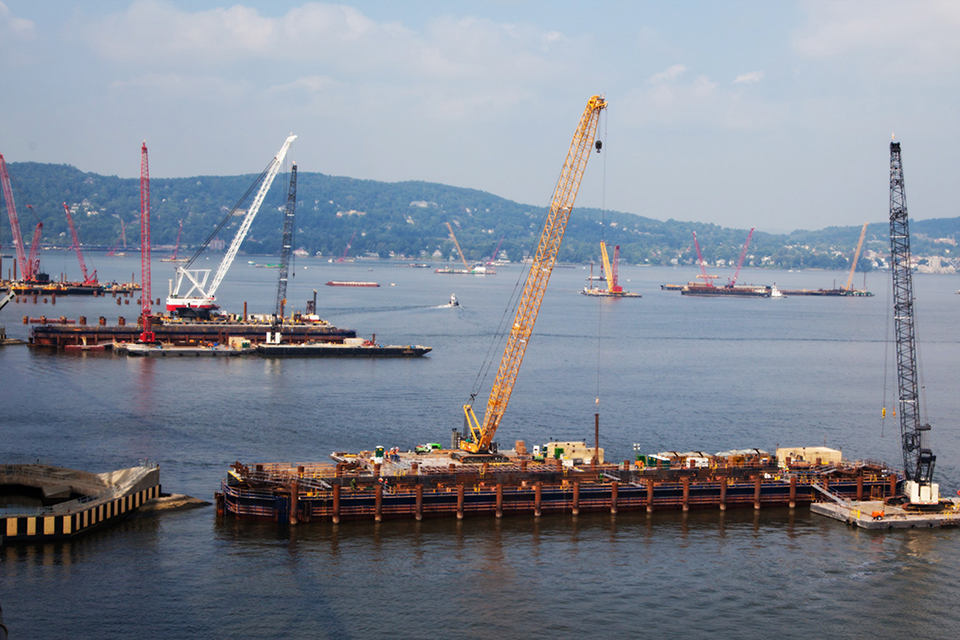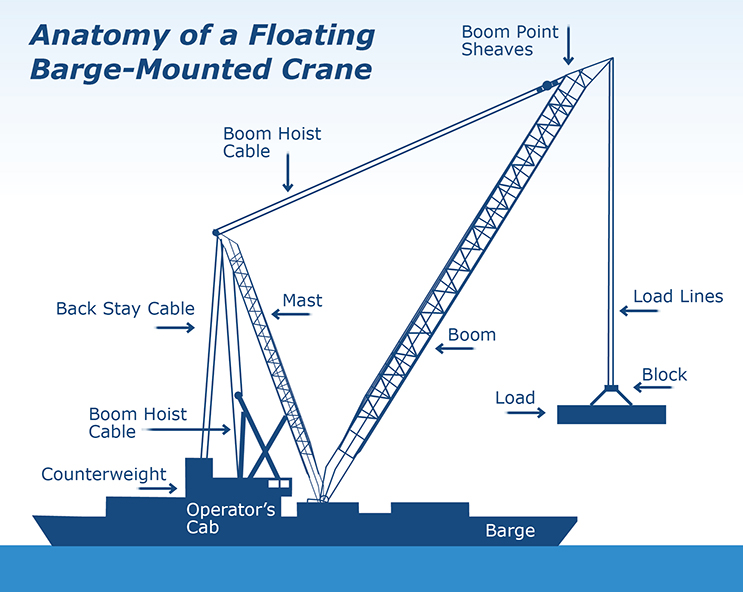
An array of nearly 30 cranes can be seen across the Hudson River.

Anatomy of a floating barge-mounted crane.
First used by the ancient Greeks, cranes lift and lower objects using a hoist, ropes or cables. While early cranes employed very simple mechanisms, modern-day cranes are highly advanced machines with sophisticated internal combustion engines and massive hydraulic systems that provide enormous lifting capacity.
As with every aspect of the New NY Bridge project, the safety of all crane operations is a top priority. The operators of these mechanical titans go through years of rigorous training and certification, and signaling crew members are proficient in a standard code of hand signals to communicate with operators so that loads are raised and lowered safely. With experience, operators graduate to larger and more complex cranes, eventually including floating cranes.

A project crane is maneuvered into position by two tugboats.
Floating crane operations can be significantly affected by inclement weather and the Hudson River’s tides and currents. Cranes are stabilized in changing aquatic conditions by pumping river water into compartments called ballast tanks. By weighing down and lowering a crane’s center of gravity, the filled tanks enable the crane to safely and efficiently lift large objects over water. As one of the largest floating cranes in the world, I Lift NY can hold as much as two million gallons of water in its ballast tanks, ensuring the super crane maintains its stability as it lifts objects weighing nearly 2,000 tons.
Piece by piece, the New NY Bridge project’s floating cranes are lifting the New NY Bridge into place. Watch the work of these construction mainstays by clicking the construction cam icon on the project website.
